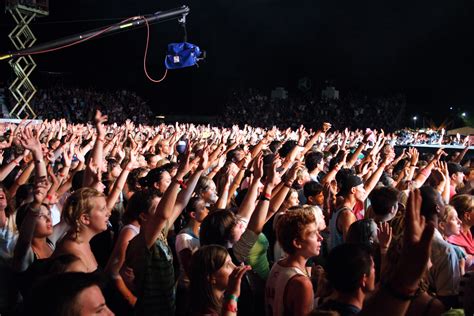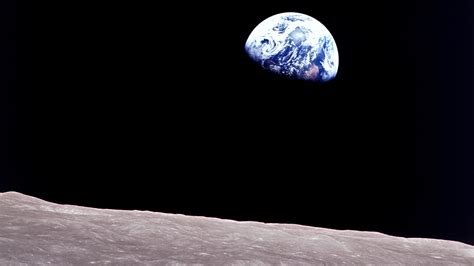|
home | what's new | other sites | contact | about |
|||||||||
|
Word Gems exploring self-realization, sacred personhood, and full humanity
Soulmate, Myself:
become astronomer of your own soul, the inner cosmos; study yourself - this is the chief aim of your earth-life “The first thing is to make resolute search within your heart and make the great discovery of the aim and usefulness of your individual life. He who succeeds in this discovery, and holds firmly to it all his earth life, has made a success, whether he wears purple and fine linen, or homespun. You scan the heavens with telescopes, but far wiser is the man who becomes the astronomer of his own soul, [the inner cosmos]. You make analysis of the soil of the field, but more difficult, more desirable it is to make analysis of the soil of your own heart, and find what flowers may grow there best, and what noxious weeds must be guarded against. It is not what a man does that makes him great, but what he is. Action is merely thought dressed in visible garb. Being must ever precede doing. Below the surface which the world sees, are springs [see John, chapter 4] which feed the life. To keep these springs fresh and sweet, is the best object of endeavor. the inner cosmos, the final frontier Study yourself carefully; and also study the seeming simple things of Nature, and you will learn that the secret of life is eternal Progress; and that the Earth life, which is of the utmost importance, is only the primary grade of life. Learn your first lessons well, that you may have a solid basis for your future unfoldment.” Channeled testimony from the other side via the mediumship of W. Aber, presented in the book The Guiding Star:
Kairissi. In our previous discussion, we introduced the concept of “ego-images.” This is no side-show but a major element in our understanding, not just of authentic romantic love but, of human relations in general. Elenchus. We should also mention that “ego-images,” and other terms we’ll be using, were made famous by the lectures of Krishnamurti. For 60 years he traveled around the world with his message concerning the cause of world conflict, division, and violence. For example, in his December 10, 1970 lecture he discussed at length the realm of “ego images.” K. This is such a large subject, Elenchus, but so vital to apprehend. How can we makes sense of this for our readers? E. We need to proceed cautiously. But let's begin. K. There's no "approved" starting point, but why don't we talk about why the ego is so compelled to create "ego images." E. Give us an example, Kriss. K. Ok, let's say you're talking to X. He makes some snide remark. This doesn't make your day, at least not in a good way, so your ego instantly creates, like a computer file, an image of X, to the effect, "X is not a nice guy." And so the next time you meet X that negative image immediately pops up on your radar screen and warns you, "Be careful with X, you can't trust him, you remember what happened last time." E. Krishnamurti would say that a situation has been created between the "observer and observed," the "experiencer and the experience," the "analyzer and the analyzed." K. And here's where the shooting starts, doesn't it? Tell us what this means, Elenchus. E. When we set up the dichotomy of "observer and observed" or the others, what we're really doing is creating distance between the two. K. Like, "I'm over here, and you're over there, and there's space between us." E. As Krishnamurti said, the ego creates this space as a form of self-protection. However, in this space lies the world's conflict and strife. K. We want to keep our distance from X, because he's trouble. E. And the space also means "we disagree, we have different views about how the world works, and how to be happy." K. Further, the space means, "you're getting in my way of what I need to make me happy." E. The ego feels quite justified in creating this space and separation, and, on one level, it might have a good argument for doing so. The problem is, what if you have a whole world living this way? What if everyone is "keeping their distance," creating a "no-fly zone" around them for protection? K. This would mean that the whole world would become an armed camp, a perpetual state of conflict - of division, separation, fragmentation, dualism, and distance. E. And how does this space occur? Again, it happens at the level of the "image-creating" abilities of the ego. K. Now, let's change the scenario for our friend X. Let's say you don't know X, never met him. But you walk into a room, and there he is. He hasn't even opened his mouth, maybe hasn't even looked at you, but - already you don't like him. E. And by "don't like him" we mean immediately the ego creates a negative image for him. K. That's not really fair, is it? - but we do it all the time; that is, we do it if the ego is running our lives. E. Tell us how this happens, Kriss. K. X hasn't said a word, but you already don't like him. What caused this "thumb's down" evaluation? Well, maybe X reminds you of someone who hurt you, someone who put you down. The association could be the shape of X's nose, or the color of his shirt, or hairstyle, or some other. Whatever it is, you've seen these "symbols of danger" before, and your ego isn't taking any chances, and so, unthinkingly, it immediately goes into "protection" mode. E. This is like Mark Twain's cat, forever shy of stoves: "The cat that sits down on a hot stove-lid will never sit down on a hot stove-lid again - and that is well; but also she will never sit down on a cold one anymore." K. The cat has its own memory-images, designed for self-protection. E. And the ego, like a computer, creates a file on X as suspect in its rogues' gallery of likely villains. K. Now, all this is getting pretty pathological and neurotic. Much of this has no basis in reality. And yet everyone reading this knows exactly what we're talking about here. How many times have you walked into a room and could feel the "ice crystals in the air" of people immediately not liking you? How many times have you been accused of something, or passed over for praise or promotion, slandered, or otherwise black-listed, for some undefined and unfair reason? E. And again, what if the whole world is living this way? What if most everyone is judging on mere appearance, creating negative ego-images, for no good reason. Well, then we'll have a world in a state of perpetual conflict - of division, separation, fragmentation, dualism, and distance. K. Recently, I was reviewing Krishnamurti's December 10, 1970 lecture and something became clearer to me. When he talked about the "observer and the observed", I asked myself, "What is being observed?" And it suddenly hit me: the ego is observing the images that it's created. Now, think about the implications. The ego isn't seeing the real person. E. The ego never truly meets the person named X but deals only with an "image" of X. K. So, what we have in the egoic world is all these phantom interactions -- not between real people but -- between ego-images, "pin-up posters" of people. E. And this is why some of the great teachers on this subject say that John and Mary never authentically meet. They never interact with the real person. They fall in love with and marry the ego-image of the other, a faux image which each has created. Little wonder then that romantic disappointment soon comes calling. K. Elenchus, let's shift gears now and speak to the other kind of ego-image, seemingly, positive ones. As a somewhat extreme example, we might think of frenzied fans at a rock concert.
E. Or at a political convention. K. Or a religious gathering of the party-faithful. E. I'm sure we could list many, but in each case the ego manufactures a near-godlike image of the celebrity in question, this neo-savior upon whom we pin our hopes for utopia.
K. Let's bring this down to an individual level. In our previous discussion, we referenced the "trophy-wife." This icon of female beauty conforms to some male's ego-image of "all that I could ever want to make me happy." E. Now some might say, well, look at all the devotion she's getting. Isn't this what she wants? K. Not really. He's never met, nor likely cares to engage, the real person behind those perfect measurements. Yes, for a while, he might "worship" her, trot her out to impress his friends, that sort of adulation, but it gets pretty lonely living on a high pedestal. The air is rarified up there, and she'll soon be choking in the misery of "adoration of false image." As we explained in Part I, this is what made "Curley's wife" so unhappy. E. When we spoke of X and the negative ego-image, we quoted Krishnamurti who said that these images are created to protect the ego. But what about the images at the other end of the spectrum, those that unduly elevate an object of desire. Let's clarify why these are created. Please explain it to us, Kriss. K. I don't really see much difference. It's still the same old play-book of the ego using others to "make me happy." With X, the ego is trying to fend off some danger to its well-being, and with the trophy-wife the ego is attempting to coronate her as "queen of heaven" that she might "make me happy." It's the same energy, just focused differently. It's all about what the ego wants, and those it meets either "help me to enter utopia so I can be happy" or become "a threat to my dreams of becoming happy." E. It's interesting that, even with the temporarily adored trophy-wife, the resultant ego-image still divides and separates people. K. Yes, that is counter-intuitive because, on the surface of things, with all that heavy-breathing veneration for her, one might expect a closeness, an intimacy. E. But it doesn't work that way. Put yourself in "the energy" of the trophy-wife, Kriss, and tell us why she's not really so crazy about all this idealization. K. Well, as we said, she's not being treated as a real person, deserving of dignity, but only a piece of warm meat to sleep with. It's very dehumanizing for her, very disrespectful. We talked about this in Gibran's vignette of Rose and Rasheed. E. The fevered male creates an ego-image of the trophy-wife that is composed of negative energy. It's just pure selfishness. It hurts both of them because it separates him from a perception of her as a sacred human being. And that's a big problem. K. And in this "space" that's created between them, which is his version of the "observer and observed," there is just as much cause for the world's division, conflict, and violence as any of the negative images created for X. And for those who think the term "violence" is too strong in this context, well, I would direct our attention to numerous examples of what happens when the trophy-wife gets sick of it and attempts manumission, or if another seeks to intervene and rescue; then, so often, the "shooting does start," and the male with legal custody of the trophy-wife as "property" can easily turn to forms of violence. Why? because "it was your job to make me happy and now you do this to me." E. Thank you, Kriss. I'd like to suggest that we take a step back for a larger perspective of this entire question of the ego and the images it creates. In "The Wedding Song" we employed the analogy of an "Earthrise view."
E. And I think if we go to a "high mountain" we'll be better able to understand what the ego is really doing in all this mayhem. Let's talk about the ego from a cosmic viewpoint. Why don't you begin, Kriss? K. As we've learned from ancient Spirit Guides, the ego is not a real entity. We can't point to a part of the brain and say "that's the ego." Instead, the dysfunctional ego is just a misdirected way of thinking, totally self-centered... E. ... which is why they call it the ego. K. It's just an ad hoc developmental stage for human beings; especially, in terms of its current intensity. The ego, in its present ostentation, is like temporary, but very prominent, scaffolding on a building under construction.
K. With all of its radical "me-ism", the ego helps us to individuate, to become stand-alone entities in our own right. So, that part is all well and good. As we grow spiritually, however, we learn to minimize the "me-ism" and live life for the greater benefit of all. E. This is excellent background understanding, but what is really going on with these "images" instantly created? K. As we've said, the images attempt to protect the ego, but the larger question is, why do we have these images at all, where do they come from? Please address this, Elenchus. E. As mentioned, the ego is like temporary scaffolding. It's meant to be taken down after construction is done. But, in the meantime, the scaffolding is firmly attached to the main structure. And, in our case, the ego-scaffolding is firmly attached to our consciousness, our powers of imagination and creative expression. K. Yes, firmly attached, which means it commandeers cognitive abilities, takes them over, as its own, just as a parasite or virus invades a cell and then works its own purpose. E. All of these analogies help us understand the instantaneously-created ego-images. K. In an inverted way, the images represent our sacred powers of creativity, temporarily gone astray. E. It's creativity in service of the ego and its "me-ism." K. Ok, I think we're getting somewhere in this attempt to understand the "machinery" of the ego. And maybe we're now ready to comment on authentic human interaction, the real intimacy both of close friendship and romantic love. E. Krishnamurti talks a lot about "there's no distance" between true friends, those with true love; there is no "observer and observed," no "experiencer and the experience," or "analyzer and the analyzed." K. But what does this really mean? However, I can see that something is troubling you, Elenchus. What is it? E. We’re making good progress in explaining how the ego works. But I feel there’s something missing. I think the problem is there's too much technical discussion. K. But isn’t it good to clearly define terms and to understand how each part of the ego works? E. All that is fine, and we need it; it’s just that, what we’re talking about here is more than just taking a computer apart and identifying the electronic components. I think we need to start again and reframe this entire topic. K. From a higher “Earthrise” perspective? E. Yes… a higher mountain. K. (silence) E. Learning about the ego, and what our dark side is made of, is not an intellectual parlor-room discourse that we can take-or-leave, remain aloof and detached, and then go about our daily business. Let’s look at that masthead quotation from Aber again. A teacher on the other side said that learning about one’s essential nature is just about the most important thing we can do on our trip to planet Earth. In line with this, I would also add, it’s a matter of life and death. K. What are you really seeing here? E. Unless we get this right, we will never find happiness, true love, or even a good degree of sanity. As we know, there are untold millions on the other side who suffer from neurosis due to an overactive ego. Let’s offer an example of what we’re talking about. There might be any number to draw from, but here’s one from a WG article:
K. Anne had allowed her petty anger to separate her from Gilbert. E. And Gilbert wasn’t a saint, either; but the point is, images created by the ego kept them apart. But even this isn't exactly what I want to say. K. Just relax, Elenchus, and allow "the answer" to come to you. E. (sighing) E. Another problem with this whole subject is that we can talk about this, as my mother used to say, "until you're blue in the face," but unless one actually, first-hand and up close, investigates and feels the evil of the ego, it's all so theoretical; as it is with experiencing the "life within". Both of these can be very abstract, too unreal and unreachable for the materialistic mind to grasp. K. (silence) E. Let me share with you a "mini-vision" I had about you late one night, and maybe this will take me closer to what I want to say. K. Did you see me in the "dazzling darkness," Elenchus? E. Yes, the "dazzling darkness"; only there do I meet the real you. And, while there, I "saw" you without any filtering effect of ego-images. Normally, if the ego leads me too much, I might see you with the image of "most beautiful girl" or "girl with most pleasing demeanor," or some other superlative. K. Like the ego-image of the "trophy-wife." E. Of that order. But in the "dazzling darkness" all "images" melt away, which means all "distance" between us as "observer and observed" shrinks to zero. And suddenly, in my "vision," there was no "space" intervening, and then, confronted with the "real you," I perceived, I felt, in an overwhelming way, the true essence of what you really mean to me. K. (softly) And what do I really mean to you, Elenchus? E. In those moments of semi-trance, my egoic blindness was lifted, and, almost as mouthpiece for the divine, I found myself compelled, virtually against my egoic will, to declare, "oh, beautiful girl, you are the one as very life to me... oh, beautiful girl, you are the one who makes me want to live... oh, beautiful girl, you are the one who overcomes my terror of living forever..." - and in this state of mystical vision, so overwhelmed was I by a transcendental sense of life, of simply wanting to live, of exulting in the joy of being alive; moreover, receiving all this as union, with you. K. (softly) I too feel your overwhelmed spirit, Elenchus. E. (sighing) I might add, that... it's difficult for me, even somewhat distasteful, to speak of these things, as... they are far too invasive of privacy, far too revealing of the inner workings of my deepest spirit... and yet... I want it to be known, especially to you, what it means to be free of the ego; if only for a short time. K. I will tell you what this reminds me of. Dr. Frankl in the camps tells the story of meeting an old woman about to die. She was lying on her bed but focused on a small window in her hut, through which she could see a branch of a tree. To Frankl, she confided that "the tree speaks to me." E. (silence) K. Hesitantly, he asked, "What does is it say?" - "I am life, I am here, I am eternal life," she replied. And, Elenchus, it becomes clear to me that -- you had a similar experience. When the influence of the ego is lifted, then "space" and "distance" are removed, we are brought closer to God and all heavenly gifts, among the most important is a perception of life itself. E. I am certain that you are correct, Kriss. And while there may be other avenues to a vision of divine life, one's Twin Soul "opens the doors," widest of all, to this palpable feeling of eternal life. K. Elenchus, can you offer a generalized precept for us now concerning the ego and its images? E. When John chooses Mary as pleasure-source or trophy-wife, he does so not as an expression of exultation of life; instead, he's trying to "fill up the emptiness" inside, attempting to mollify the psychological burden of "I don't have enough" because "I am not enough." K. There is no joy in it for John; It's not really Mary that he wants - he never meets the real Mary, and doesn't even really want to talk to her so much. What he's really trying to do is cover up the pain in his spirit. Yes, Mary might provide, for a time, comfort and thrill, but these bio-pleasures offer no lasting solace to John. His underlying fear of death, his terror of never apprehending a fullness of life and happiness, remains untouched and inviolable. E. We should begin to wind down this discussion lest it run to excess; however, before we leave, I feel that I should, at least briefly, add one more item of clarification concerning the images of the ego. K. Please. E. What I'm about to share is an incomplete idea; something for personal meditation. It's about "distance" and "oneness." K. Of the kind we've been speaking about? E. As we've seen, when the ego produces an image, the "observer and observed" also come into play. K. And this sense of "I am not you", of no underlying connection, creates "distance" between them, which is the root cause of the world's disharmony. E. But when the barriers of the ego are removed, the intervening "space" collapses to zero... K. ... and then a sense of intimacy, closeness, and love are experienced. E. And it occurred to me -- this sounds very familiar! Where have I heard this idea before? of space being something fluid and elastic? And then I remembered the lecture by physicist Peter Russell. K. Oh, he did such a great job in that presentation. E. He said, the faster an object moves, the more space and time shrink. Here's a chart he offered: E. You'll need to get the full details from his lecture, but, as we see here, at "87% c," that is, 87% of the speed of light, space and time shrink by 50%. And if an object could achieve light speed, "100% c," then space and time would reduce to zero. K. I've always thought this to be an amazing fact of the natural world. no space, no time - for light E. So, what this means is, from the photon's point of view, there is no time, there is no space. Russell suggests that the photon's viewpoint is the "real world," and that what we experience right now is just a temporary construct for mortal beings, or any beings traveling at less than the speed of light. K. That's really interesting, isn't it. E. And what does this have to do with us and the ego? Well, as we've learned, we are not primarily flesh-and-blood creatures but expressions of Universal Consciousness. It is said that light, with its unusual properties, "has one foot in this world and one in the unmanifested realm of consciousness." I think this is correct. K. This would mean that light is the "purest" expression of Universal Consciousness that we have in the 3-D universe. E. Consider, too, that teachers on the other side sometimes say that, in our core essence, we are "beings of light." K. And the "Gospel Of Thomas" too speaks extensively on the "light within". E. And so, putting this all together, we have a working theory: When we act as tools of the ego, as material objects of the universe, we create "space" in our interactions. But when we remove the ego, and operate on the level of the "inner light," then all space shrinks to zero, harmony and oneness are achieved.
K. Elenchus, as a postscript, could you say something more about the mystical experience you had? You don’t have to be a “saint” for that to happen, do you? E. By no means, and I think I’m standing evidence for the proposition. But here’s what we need: we need to “open a channel” so that God can teach us. And we open a channel by “meditating.” Now, the word “meditate” is so laden with errant baggage they we hesitate even to use it. K. We don’t have to sit in a certain way, or chant certain words, or hold our hands in a certain way. E. No, none of that, and Krishnamurti’s lectures are a good source of information on this. The essence of meditation is simply that of “awareness,” a heightened sense of awareness. K. And how do we get that? E. As Krishnamurti also famously asserted, “truth is a pathless land,” meaning, there’s no sure-fire formula to make this happen. K. Tell me what happened when you were lying in bed and how you received your “vision.” E. For me, it was like this. I began thinking with a “trophy-wife” ego-image of you. That’s easy because you are the most beautiful girl I’ve ever seen. K. (silence) E. But that alone won’t produce the “open channel.” Here’s what I did next. I could feel the “distance” between us in this “observer - observed” orientation, and it didn’t feel right to me. So, what I did was to relax and just focus on the energy of the ego-image. Krishnamurti calls this “choiceless awareness.” This is extremely important and at the heart of the whole meditation process. When you focus on the negative energy of the ego-image, don’t fight it, don’t resist it, don't judge it, don't name or label it, just feel it, be aware of it, allow it to roll around your head with no opposition. This is “choiceless awareness.” And if it’s done in the right way, then you might feel yourself slipping into “the zone”; and then the “distance” that I felt between us suddenly evaporated. no space, no time - for Twin lovers K. This is like what Russell said happens when a photon is racing at light-speed. There’s no space anymore! And, we should also comment about "no time." In true love, love as a sense of "was" or "will be" fades away. We might remind our readers of extensive discussion of "no time" in "The Wedding Song" where we spoke of God as "singular pervasive reality." E. That is one of my very favorite concepts: When authentic lovers interact, there is no perception of "I met you x-number of weeks or years ago and then fell in love with you," but, far more compelling, "I feel that I have always known you, have always loved you, I've always been part of you!" K. Some errantly ascribe this oneness to "past lives", but it has nothing to do with that but only an accessing of a higher level of consciousness. Twins experience their love not only in terms of "no space" but "no time," as well. This is such a beautiful sense of reality for them! E. We might even say this: When there’s no space and no time to divide, when the “observer and observed” become one, then reality itself feels like it's transmogrified into something very strange – strange by our 3-D standards, but marvelous from a higher view. I will try to say a bit more about what happened to me, but, frankly, mere words could never describe that experience; each person must seek it for him- or herself. K. (softly) Elenchus, even so, try to tell me what it means or feels like to “become one” that way with “no space” and "no time." E. (sighing) I realized, I “saw” clearly, who you really are to me! And I experienced, with deep feelings, that you are much more than “the most beautiful girl I’ve ever seen”; much more than the summation of what I always wanted in a darling companion – I could go on, endlessly, with these statements of superlative, but, all I can say is that I saw you, rather, I inhabited, was plunged into, a perceived reality of you, as the very meaning of life - my life - the very focus of blessing from Mother-Father God, the epicenter of what it means, for me, to be alive. K. (softly) Elenchus, many times in the past we've stated that this kind of mystical revelation is what's needed to perceive the identity of one’s Twin Soul. perceiving the identity and meaning of your Twin Soul is not a one-time event E. And that's correct. But what I didn’t know before is that this “unveiling of identity” is not a one-time event for Twins. K. This is a brand new understanding for us. E. What she offers is utterly fathomless, ineffable, virtually unknowable, with no-space-and-time – as is Consciousness itself. Kriss, I have sometimes said that, in a hidden part of me, I feel a slight sense of being "stunned and astonished" every time I see you, every time I view a photograph of you. I've often wondered about this over the years, asking myself, "Well, this minor 'jarring surprise' has been going on for so long, so surely a time will come when I will 'get used' to being around you." But, no. K. What does this really mean, Elenchus? E. I've finally come to understand that I will be "stunned and astonished" to “see” you, to realize who you are to me, all that you mean to me – every day, in a deeper way -- throughout the coming eons of time. K. Wow, Elenchus! - this is more than being viewed as a "trophy-wife." E. For a long time, I've felt that one's Twin Soul, "made in the image," reveals the beauty of God's visage, a kind of local and particularized "beatific vision." I've experienced this phenomenon for so many years now that I know it's true, and I now know it's not going away - because, if she really is God's "agent" in this way - is it possible to ever become jaded or bored with the shimmering-glistening-sparkling splendor of the face of God?
|
|||||||||
|
|








